The popular party had actually ended on Sunday 23. The suspension became effective as of Monday 24 to avoid affecting the huge flow of tourists that every year meets in Venice to celebrate one of the oldest carnivals in the world.
The Carnival of Venice has nothing to do with the Carnival in Rio de Janeiro and with almost none in the world. It is the longest in the world (in total the party lasts 10 days).
Quiet and elegant, those who participate in it wear masks and costumes from the 17th century.
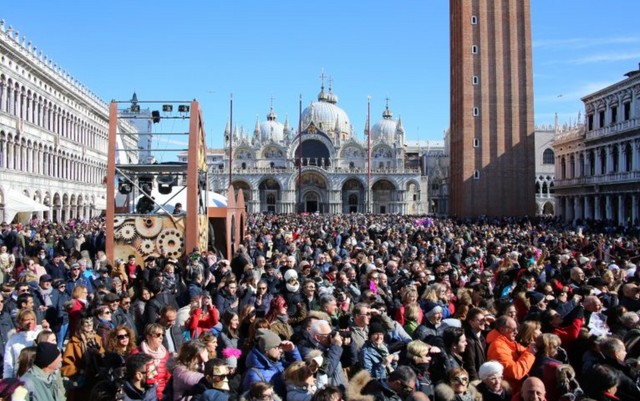
The oldest in the world.
The origin of this festival is at the end of the 11th century, the date of the first writings that testify to it, although it was not an official party until Christopher Tolive, in 1296, presents it to the authorities.
The first evidence goes back to a document of the Doge Vitale Falier of 1094, which speaks of public entertainment and in which the word Carnival is mentioned for the first time.
The Venetian population continued to disguise themselves for centuries and centuries, reaching its peak in the eighteenth century, at which time nobles and even royal families came to join the revelry. In that century, the rulers allowed even go disguised during the middle of the year and not just the ten days of rigor.
Venice was then the world of Giacomo Casanova, a superficial, festive, decorative and gallant world, the world of painters such as Boucher and Fragonard, Longhi, Rosalba Carriera and Giambattista Tiepolo, the fatherland of the character Comedy, one of the best European theater authors and one of the best-known Italian writers abroad: Carlo Goldoni, who, in a poem dedicated to Carnival, represents the spirit of the party:
“Qui la moglie e là il marito
Ognuno va dove gli par
Ognun corre a qualche invito
Chi a giocar chi a ballar”.
- “Here the wife and there the husband *
- Everyone goes where they want *
- Everyone runs to some invitation *
- Some will play and others will dance. "*
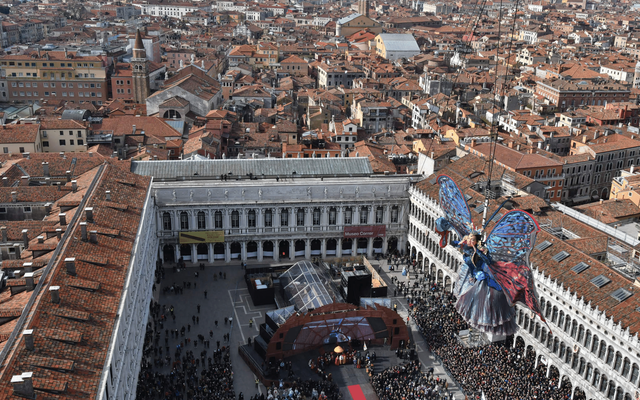
The beginning of the party.
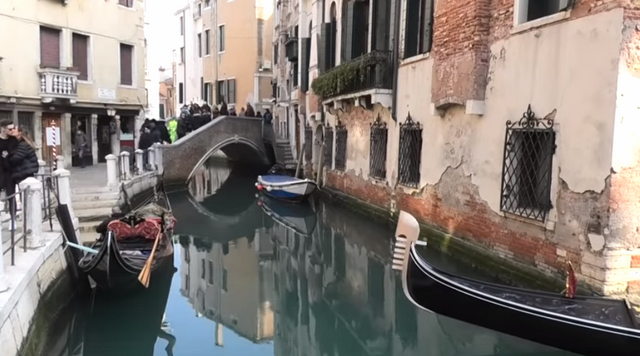
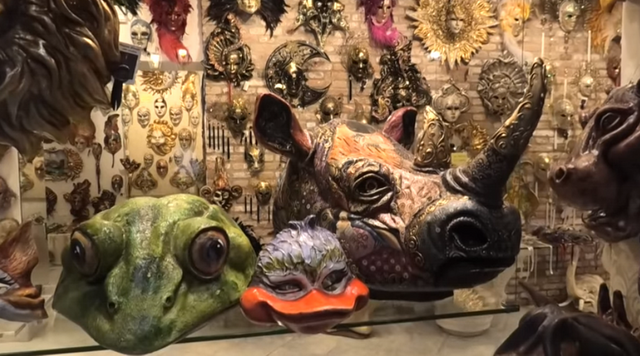
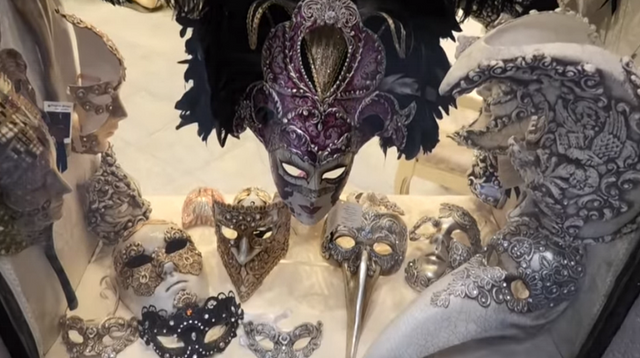
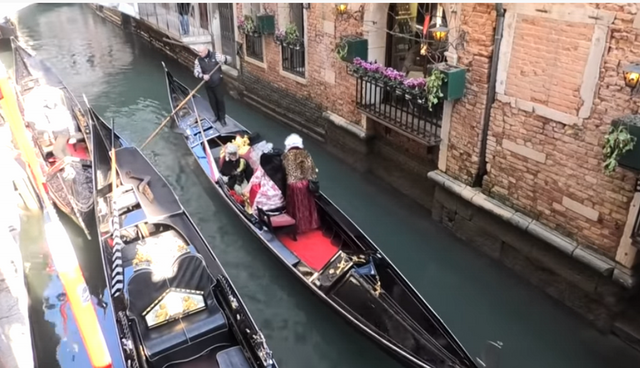
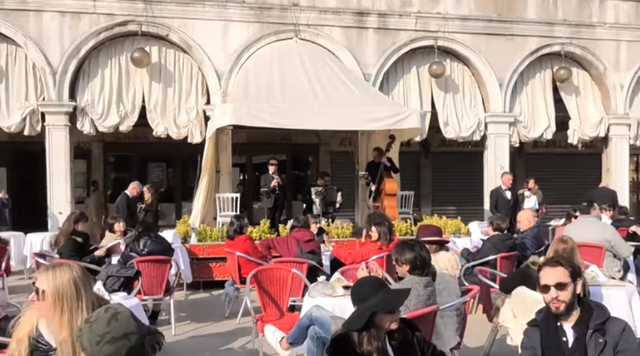
The party begins at dawn on the first day of celebrations. The manned access doors, at the entrance of Piazza San Marco, close about twenty minutes before the show when the maximum number of visitors is reached, 25.000
Usually thousands of people remain outside the controlled doors.
People come from everywhere. You take the vaporetto (the water collective) or the tragget (the gondola of the poor.
The Venetian dichotomy leads locals to cover the streets and canals on those dates, while resisting the tourist invasion all year. To open the carnival, everyone participates in the Venice Festival, an event that every season transforms the Rio di Cannaregio into a stage on the water.
A party on the water.
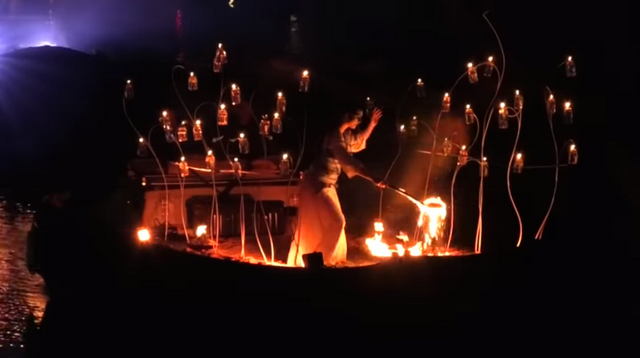
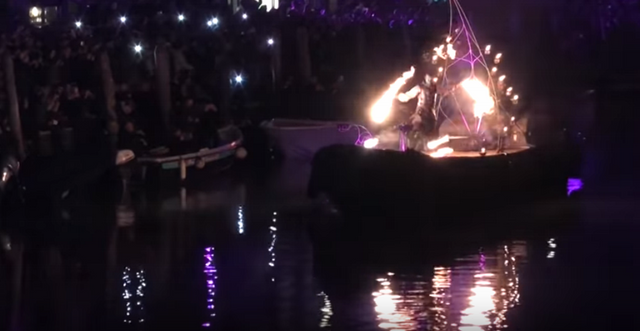
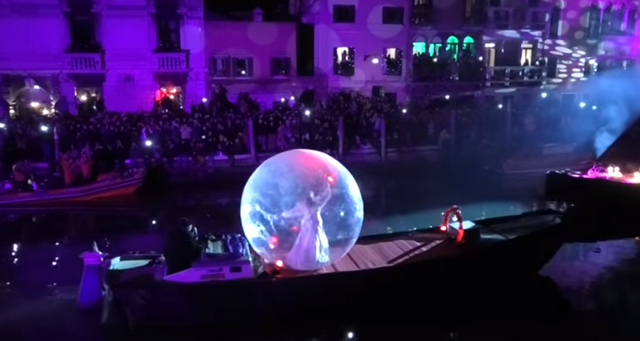
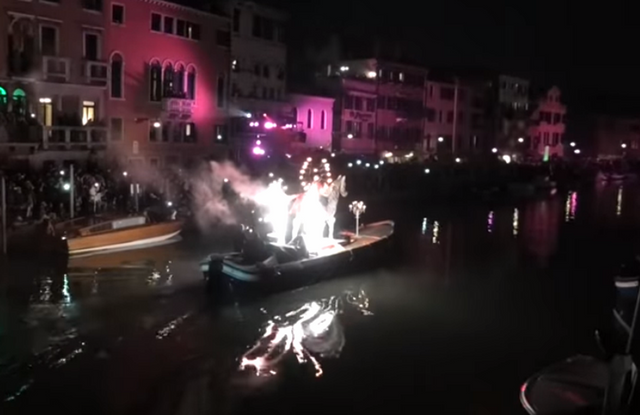
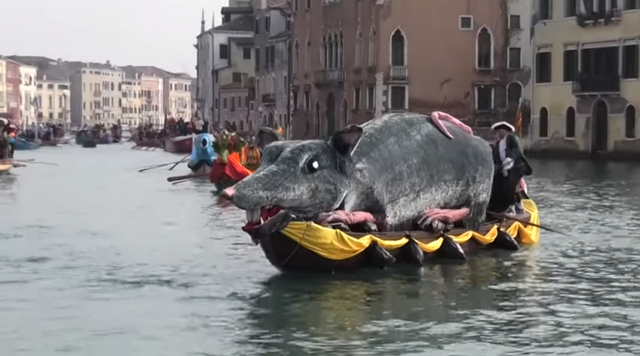
The official start of the Carnival of Venice takes place every year with the wonderful Venetian Fiesta on the water, in Italian La Festa Veneziana sull’acqua.
The Cannaregio canal becomes an aquatic setting for a magical start to the carnival. The floats made on boats and gondolas give a definite Venetian touch. They can attend at 18 and at 20.
The parade of the gondolas, with artifice games and artistic exhibitions, already at night - in the middle of the European winter - is simply spectacular.
The water festival is often accompanied by other events in the historic center, as is the joy of all visitors to the island.
A true party throughout the city.
The charm of the masks.
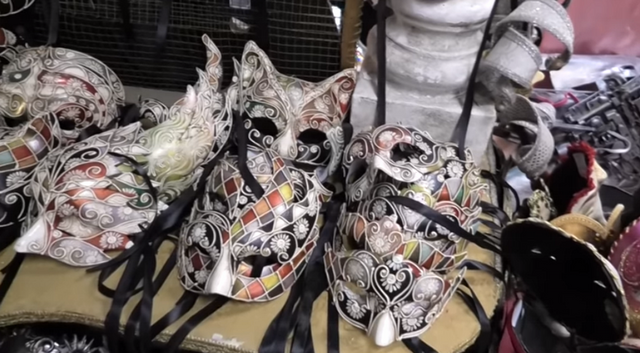
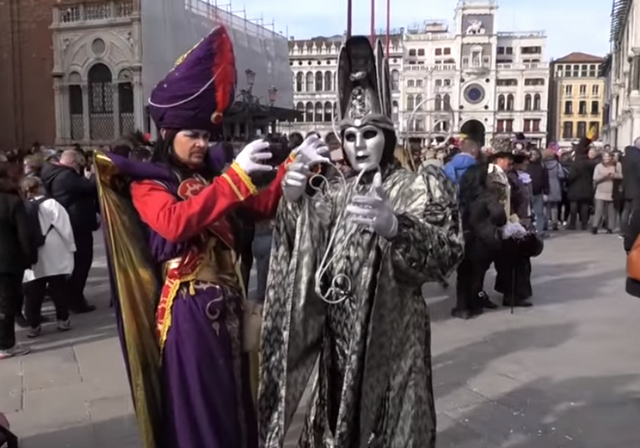
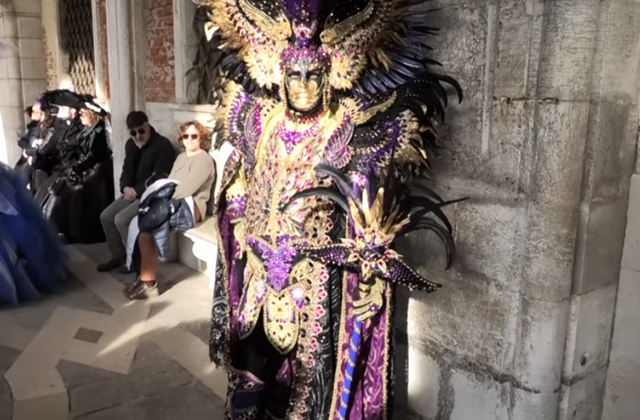
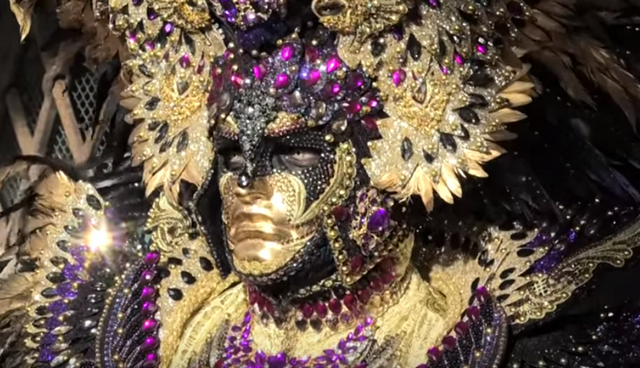
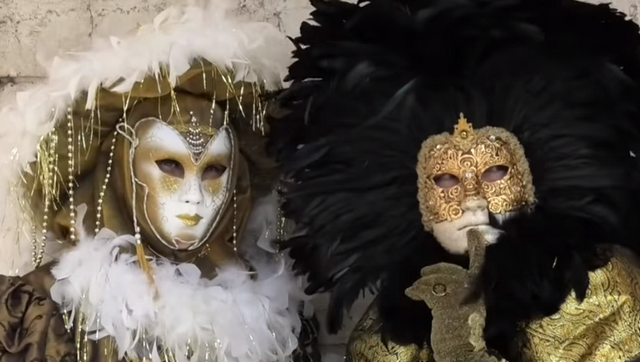
A continuous representation of theatrical joy and fun takes place between the streets of the wonderful city for ten days, all in masks to celebrate the charm of a world of dance, jokes, exclusive gala and romantic encounters.
The most famous Venetian mask is the Baùta, one of the most common costumes in the ancient Carnival, especially from the 18th century. It is still one of the most requested figures today, because it can be worn by both men and women: it is composed of a particular white mask, also called a larva, and completed by the tabarro, a long traditional dark cloak.
Another popular mask at that time was the Moretta, worn by women, which consisted of a black round mask that was supported by an internal button held by the lips. For this reason, he was also called a mute servant, because he did not allow to speak or eat or drink.
Other typical costumes for women are the Gnaga, which consists of simple clothes and a cat mask, and the Columbine, considered the female counterpart of the bauta. This particular mask is in great demand because it does not cover the entire face but only the eye area and can be held with a tape around the head or with a stick that is held in the hand.
The closing of the Carnival.
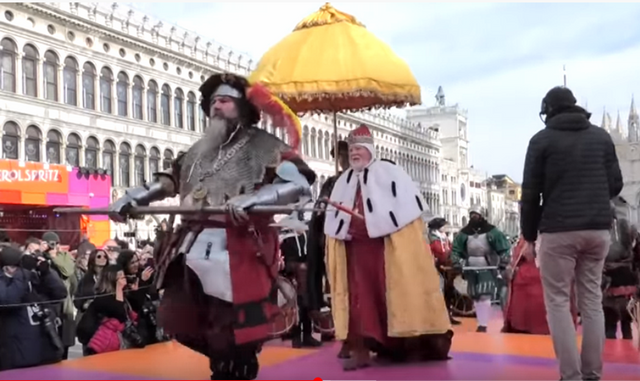
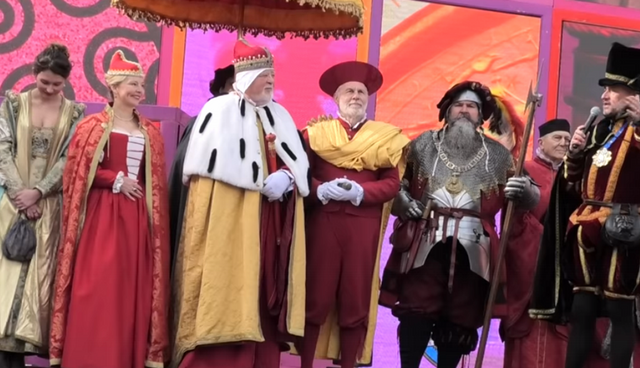
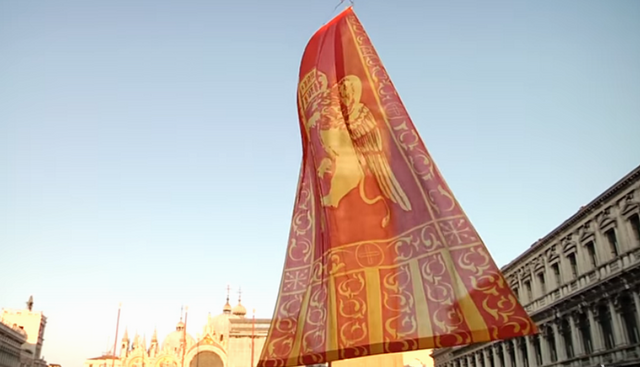
With the traditional "Svolo del Leon", the Venetian carnival officially ends in Piazza San Marco.
Thousands of people attend the suggestive ceremony, accompanying the huge banner, made in 2012 by Angelo Lodi.
He stands "in flight" on stage looking towards the bell tower of the square singing all present the notes of the hymn of San Marco.
The "svolo" is preceded, every year, by the coronation of the "Maria of the Year" dux, the nineteen-year-old girl chosen the day before at the La Fenice Theater by the technical jury.
The queen is accompanied on stage by 11 princesses, called -like the queen- "Marias".
The "Marie" is, in fact, an old party, dating from 973, the year in which, at the feast of the purification of Mary, or on the second day of February, 12 promised brides were kidnapped by pirates who had to participate in the traditional ceremony, which took place in the church of San Pietro di Castello.
However, pirates are persecuted and girls released. The Thanksgiving party is created, which establishes that every year 12 young people, of marrying age, elected among the most beautiful and poorest in the city, receive the dowry, then parade with jewels throughout the city.
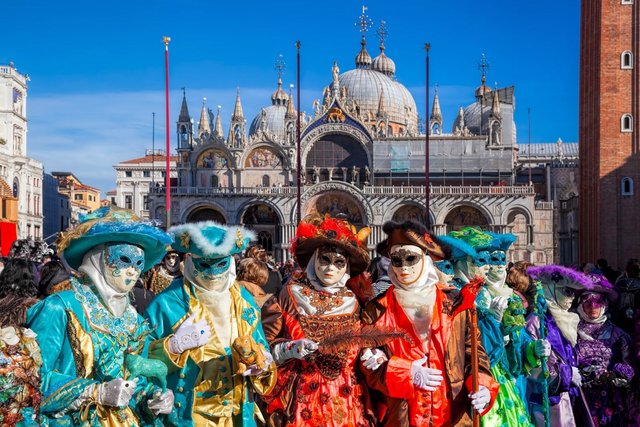
The photos correspond to the Carnival of Venice of 2015 that I had the great fortune to attend.







